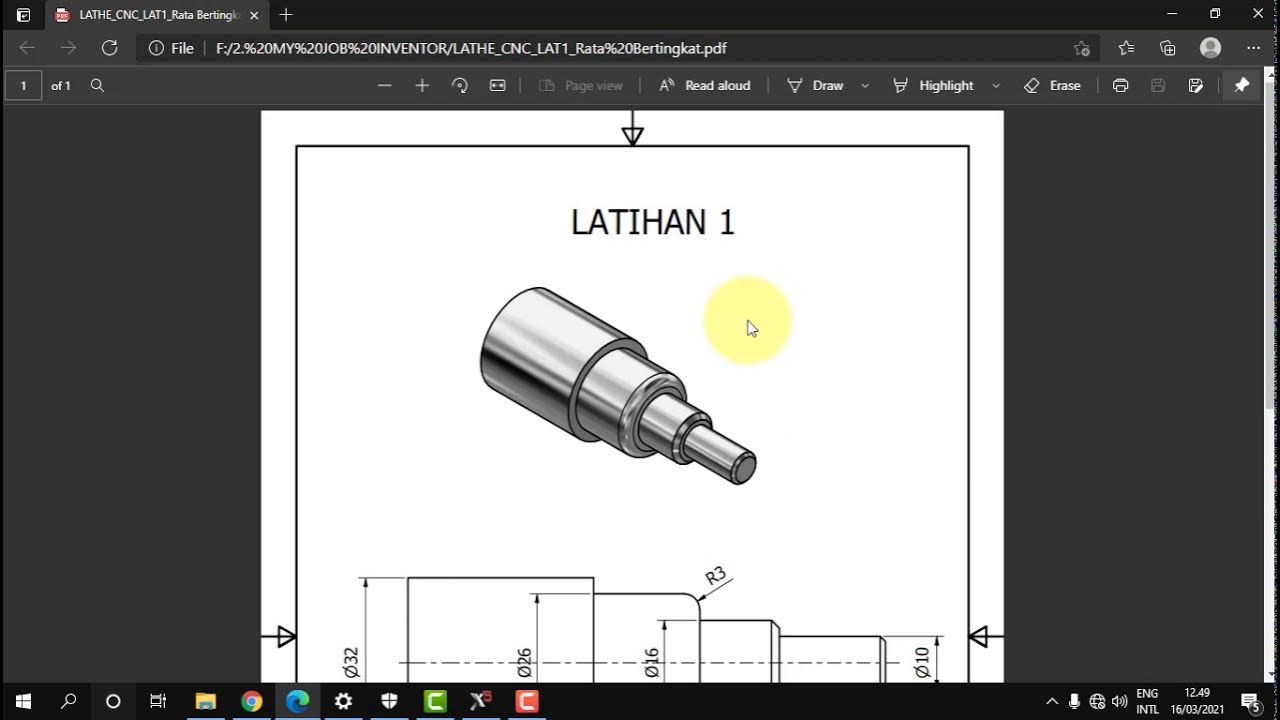XI TPM - Teknik Pemesinan Frais - Memahami Bagian Bagian Mesin Frais Berdasarkan Jenis & Fungsinya
Summary
TLDRThis video focuses on the essential concepts of machining engineering, specifically the parts and functions of milling machines. The content covers the cutting process, the types of milling machines, and their applications in industries such as mining. The speaker explains the basics of machine settings, including cutting depth and speed, and discusses various types of workpieces. The video also introduces key concepts in milling techniques, emphasizing practical skills, 3D shape production, and the importance of understanding machine operation. Viewers are encouraged to engage with the content and subscribe for further educational material.
Takeaways
- 😀 Milling machines are used to understand and perform cutting processes on workpieces, with a focus on producing specific shapes, such as writing or images.
- 😀 The main function of a milling machine is to help create precise and intricate shapes on various materials, especially for large or industrial projects.
- 😀 Milling machines are important in industries like mining, as well as for creating special shapes in products.
- 😀 Different types of milling machines, such as horizontal and business milling machines, are used depending on the type of workpiece and its requirements.
- 😀 The key operation in milling machines involves rotating a cutter that interacts with the workpiece to produce the desired shape.
- 😀 Manual or automatic settings are used to control the movement of the milling machine, with depth adjustments being crucial to achieving the right cut.
- 😀 Cutting speed in milling is calculated based on the diameter of the cutting tool and the material being worked on, with specific formulas to determine the correct values.
- 😀 For example, a cutter with a 50 mm diameter can cut at a speed of 35 m per minute to achieve a proper finish.
- 😀 The script explains how adjustments to the depth and cutting parameters affect the efficiency and outcome of the milling process.
- 😀 Students are encouraged to understand both the theoretical and practical aspects of milling, including the use of cutting speeds, settings, and machine types for successful machining projects.
Q & A
What is the main focus of the video script?
-The main focus of the video script is to introduce and explain the parts and functions of milling machines, along with their role in machining engineering and practical applications.
What is the purpose of studying milling machines in machining engineering?
-The purpose of studying milling machines in machining engineering is to understand their components and functions, and to apply this knowledge in practical settings for tasks such as cutting materials and producing shapes.
What are the primary types of milling machines mentioned in the script?
-The script mentions horizontal and vertical milling machines as the primary types, each serving different purposes in machining processes.
How does the script describe the movement of a milling machine?
-The script describes the primary movement of the milling machine as the rotating movement of the spindle, which is essential for cutting the workpiece. It also mentions manual and automatic settings to regulate cutting depth.
What factors influence the cutting speed in milling processes?
-Factors that influence the cutting speed include the diameter of the tool, the material being cut, and the desired cutting speed (measured in meters per minute). Specific examples of cutting speeds for different diameters are provided in the script.
Can you explain the cutting speed calculation provided in the script for a 50 mm diameter workpiece?
-For a 50 mm diameter workpiece, the script calculates the cutting speed as 35 meters per minute. This is based on the material and machine conditions, which determines the optimal cutting speed to avoid damage or inefficiency.
What is the significance of adjusting cutting depth in milling machines?
-Adjusting the cutting depth is crucial to ensure the correct material removal and achieve the desired shape. The script explains that this can be done manually or automatically, depending on the machine's capabilities and the precision required.
How does the script connect milling machine operations to real-world applications?
-The script connects milling machine operations to real-world applications by highlighting industries such as mining, where milling machines are used to create special shapes, including writing or images on materials.
What is the role of the 'coffee grinding machines' mentioned in the script?
-The 'coffee grinding machines' mentioned in the script are used as an analogy to explain how milling machines produce different shapes. It illustrates the versatility of milling machines in creating various forms.
What is the call to action at the end of the video?
-At the end of the video, the speaker encourages viewers to like, comment, subscribe, and press the bell button to support the program and stay updated with future content.
Outlines

This section is available to paid users only. Please upgrade to access this part.
Upgrade NowMindmap

This section is available to paid users only. Please upgrade to access this part.
Upgrade NowKeywords

This section is available to paid users only. Please upgrade to access this part.
Upgrade NowHighlights

This section is available to paid users only. Please upgrade to access this part.
Upgrade NowTranscripts

This section is available to paid users only. Please upgrade to access this part.
Upgrade NowBrowse More Related Video

Materiais e Processos de Fabricação para Engenharia de Produção - Usinagem convencional: Exercícios

Milling machine tutorial - cutter selection, speeds and feeds, coolant, high speed machining

CNC Basics - Everything a Beginner Needs To Know

Machine And Machine Tool(हिंदी)

Bagian-bagian Utama Mesin Frais konvensional

MASTERCAM X5_BUBUT DASAR BIDANG BERTINGKAT
5.0 / 5 (0 votes)